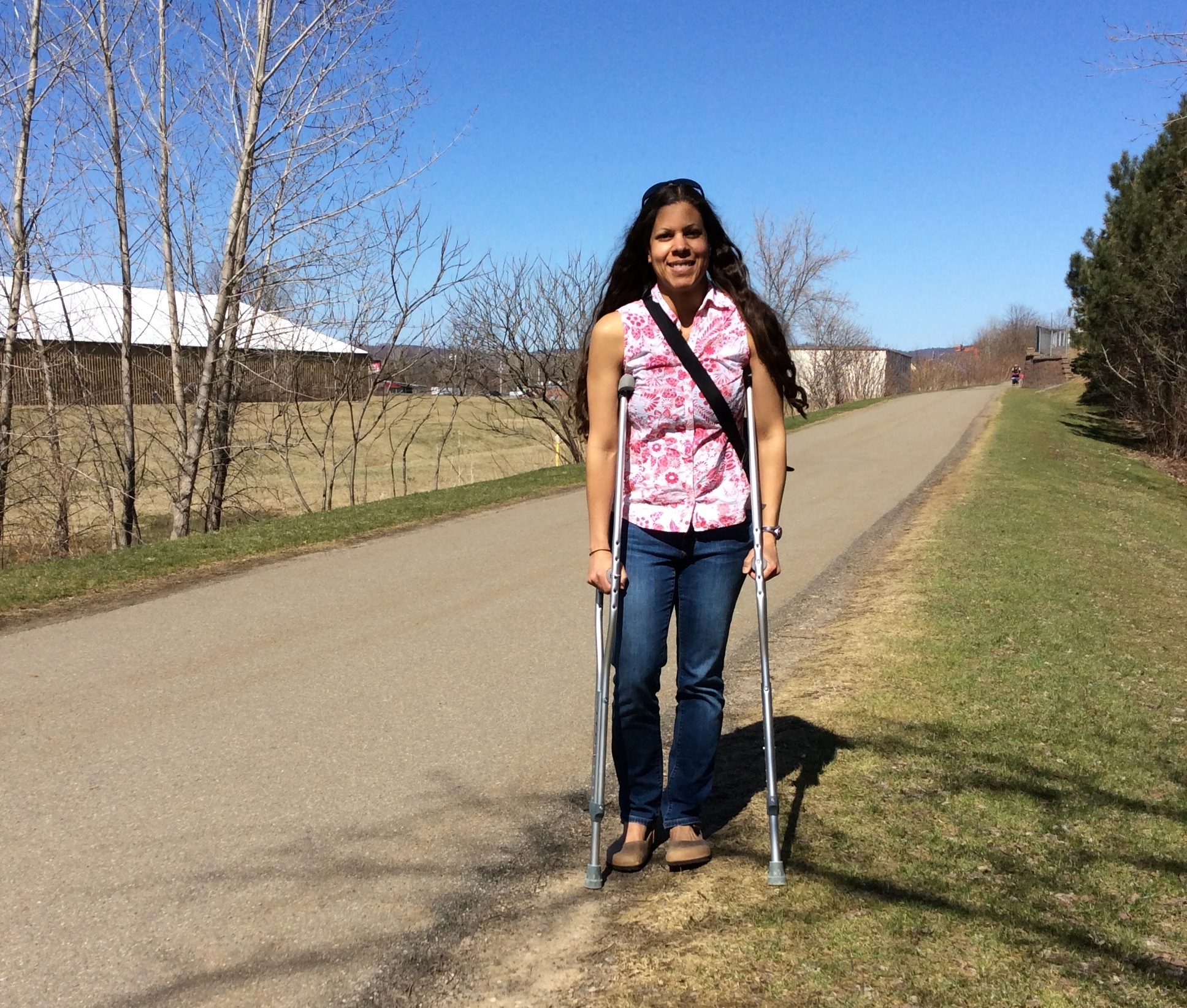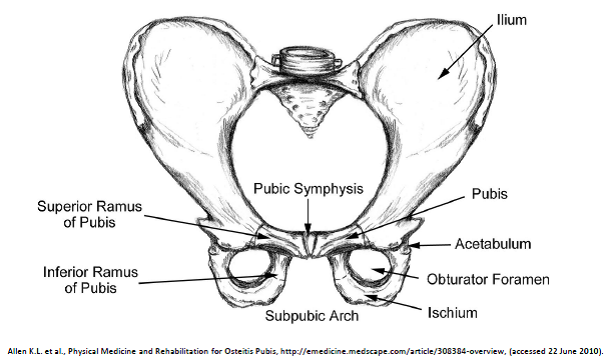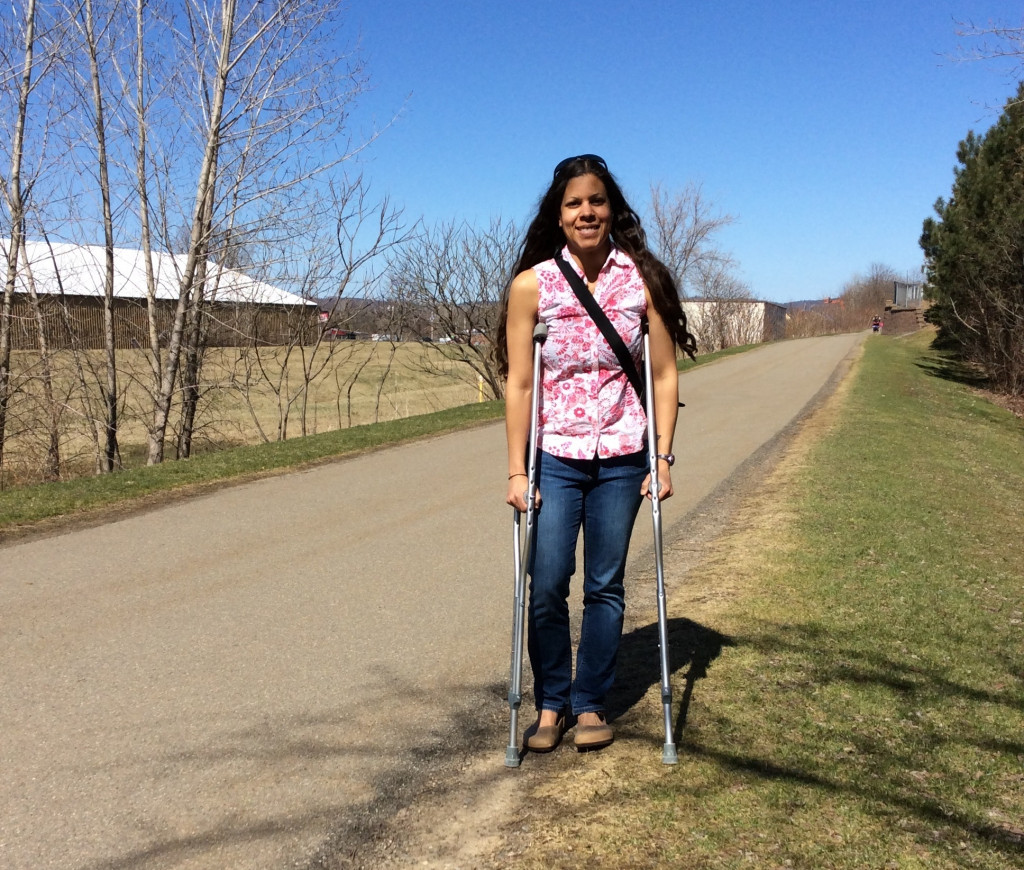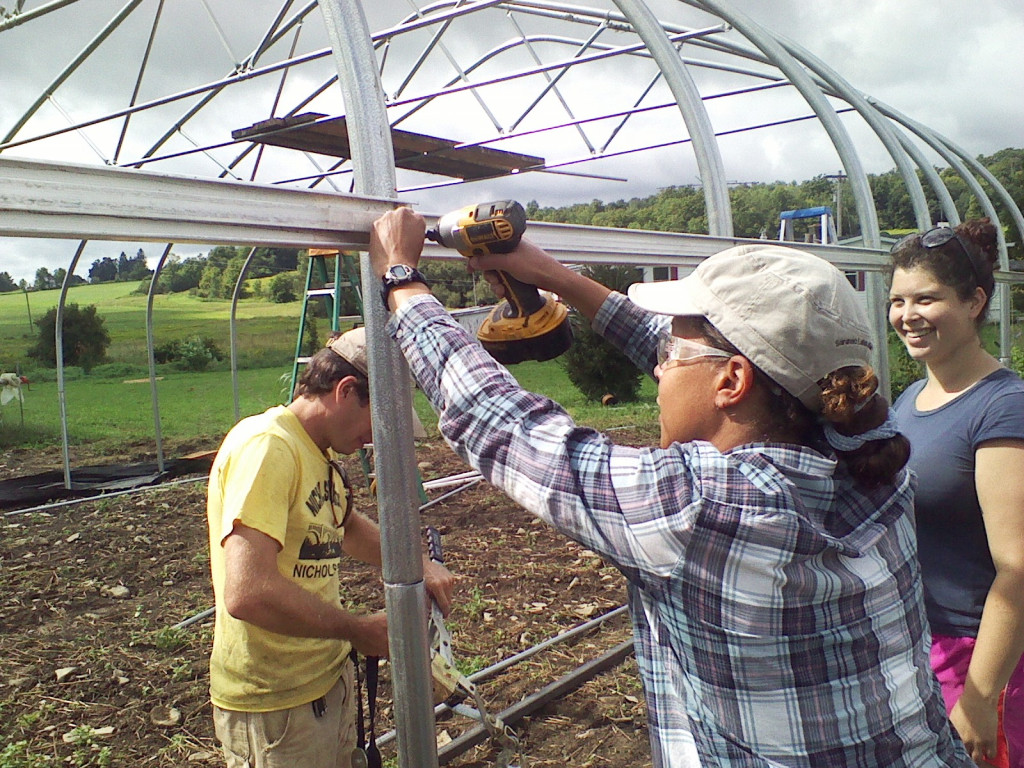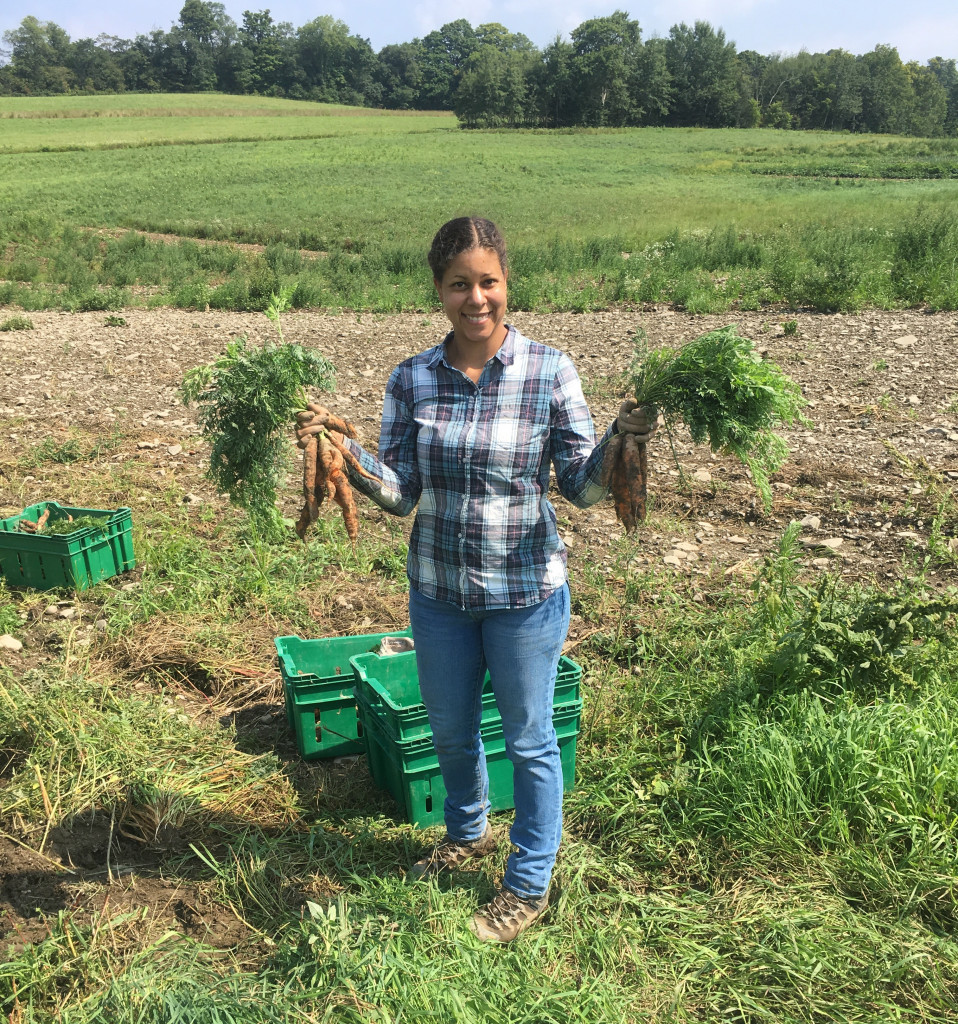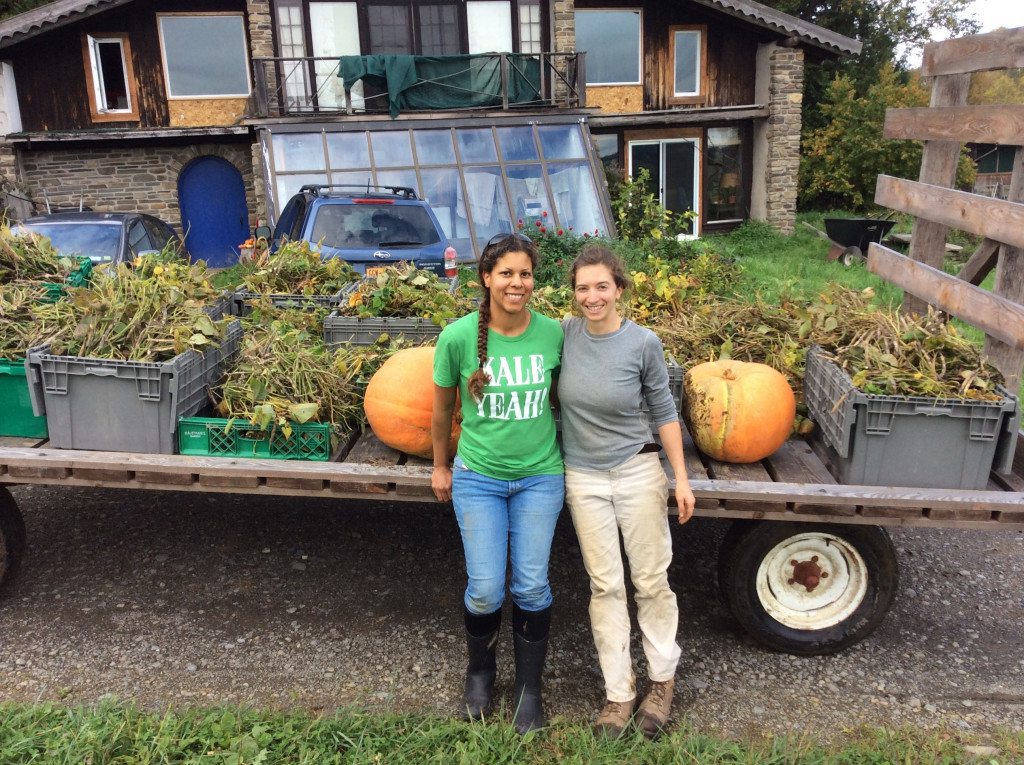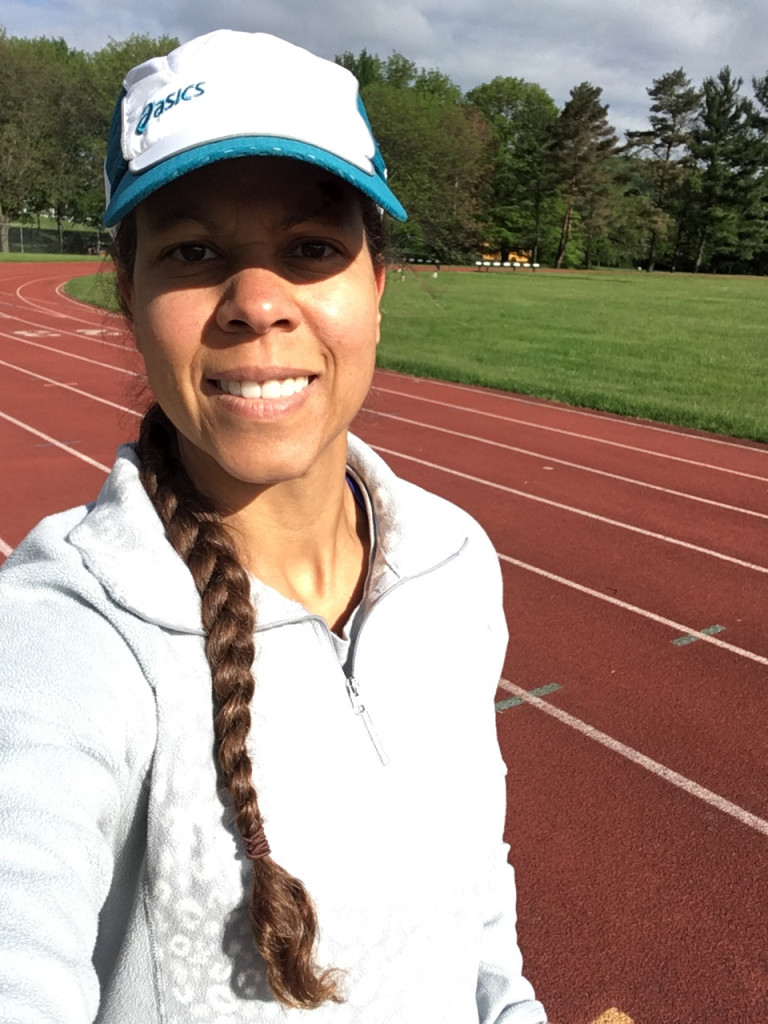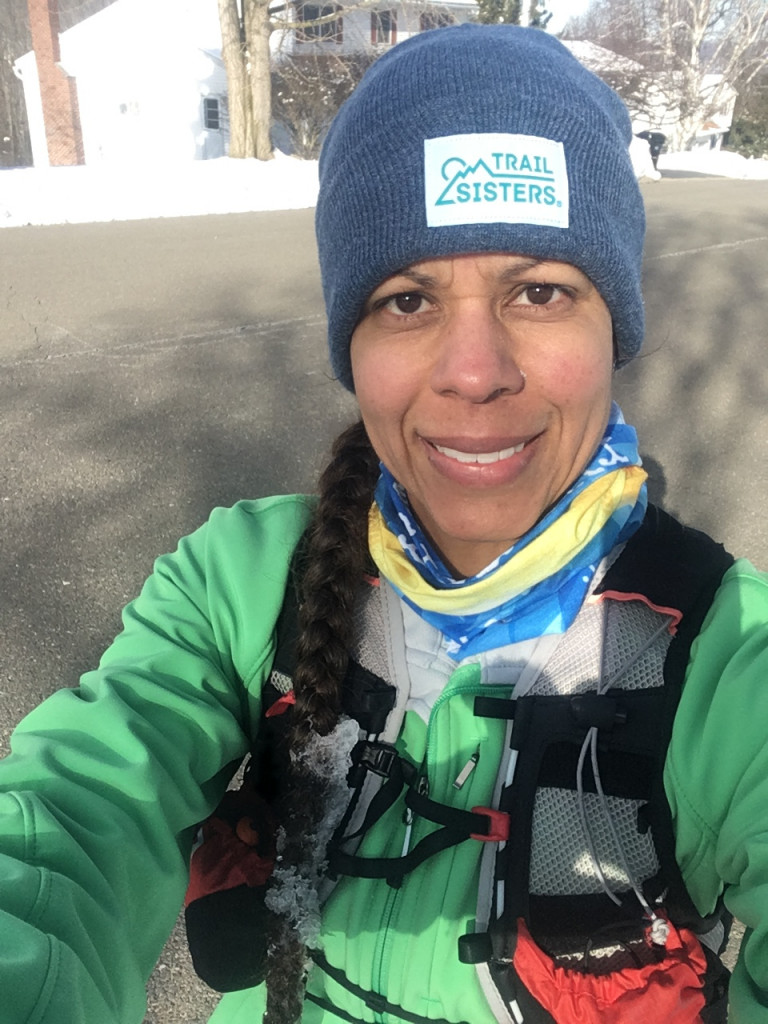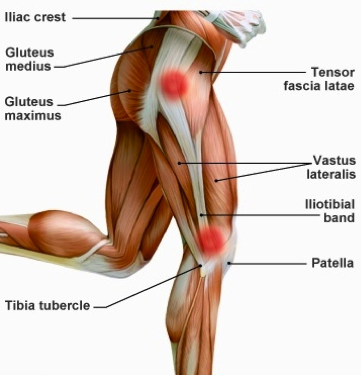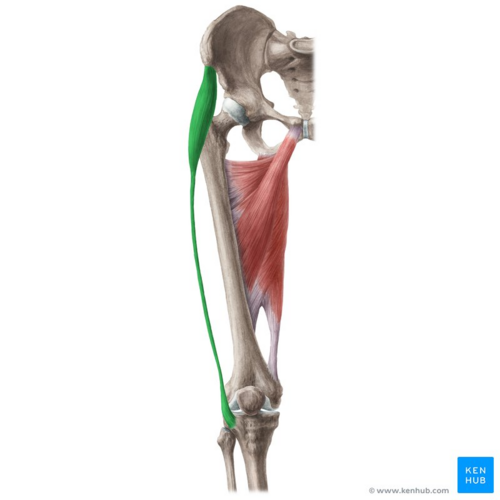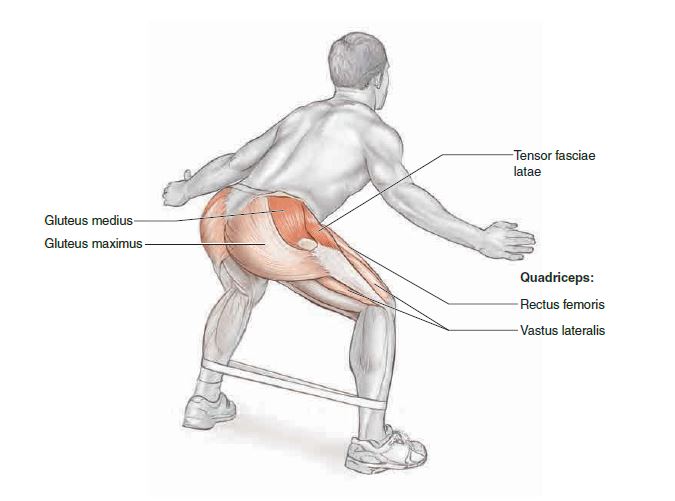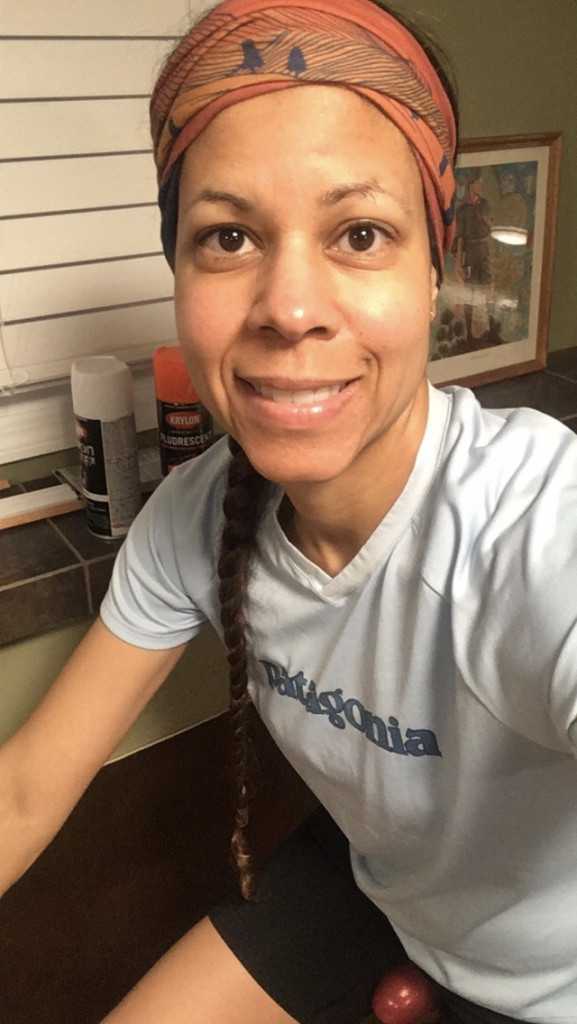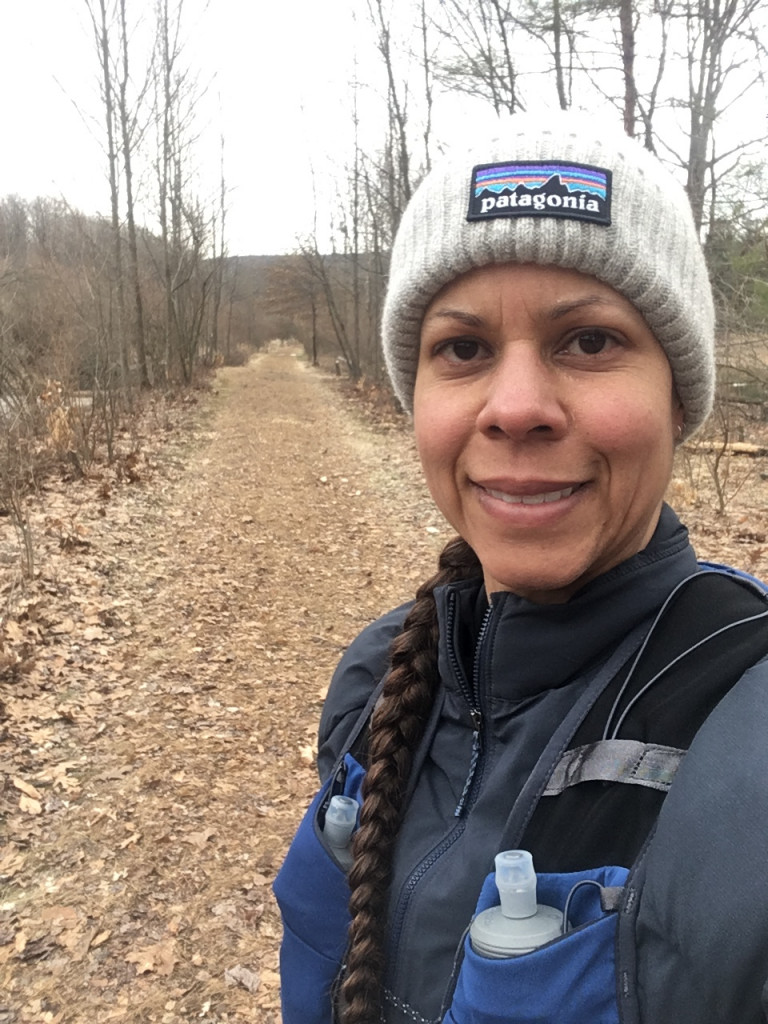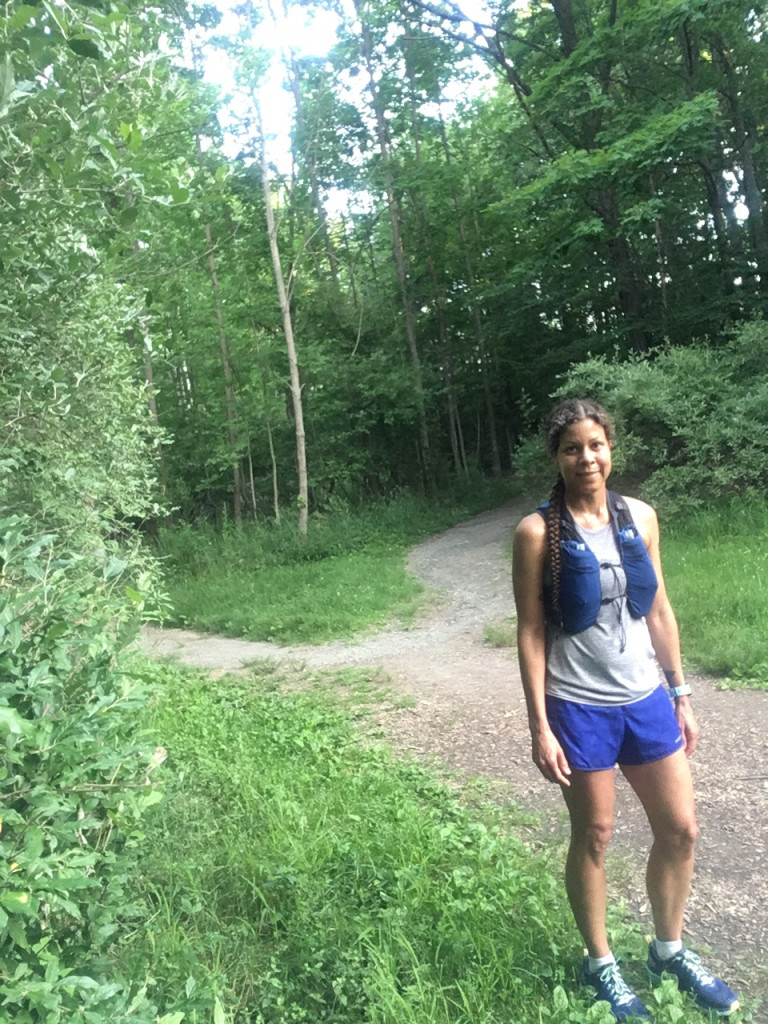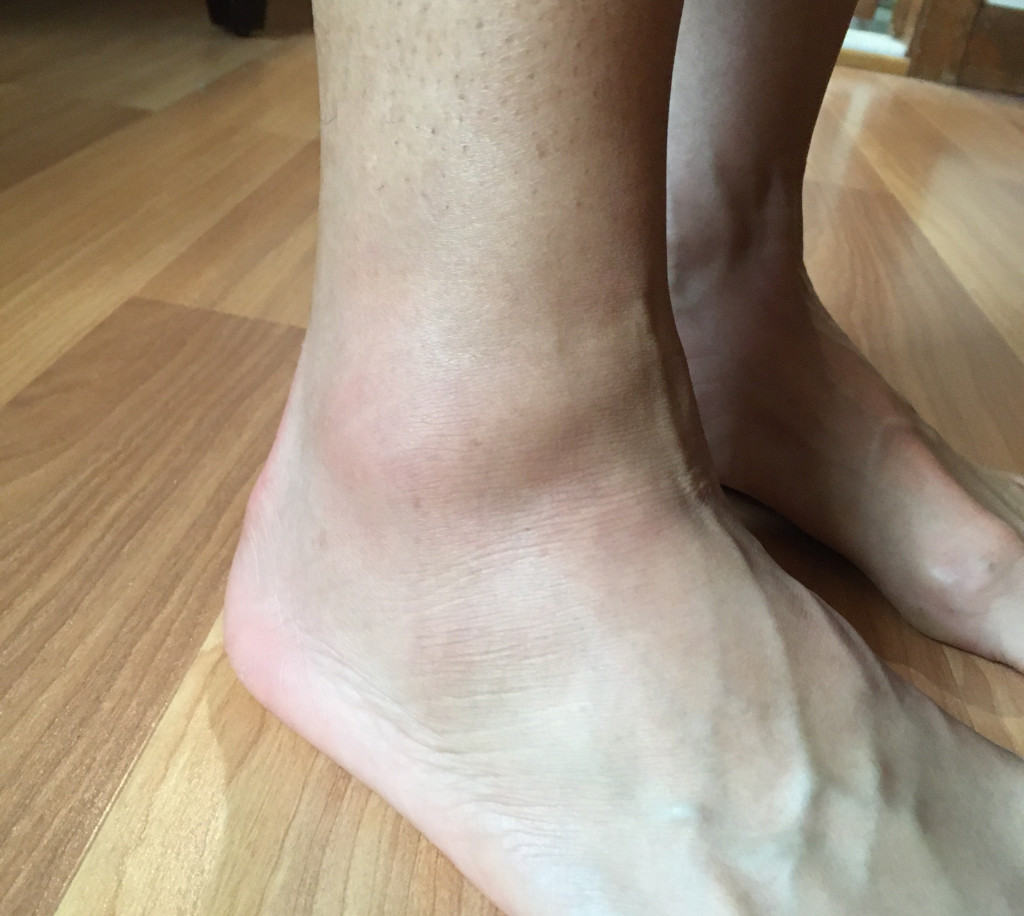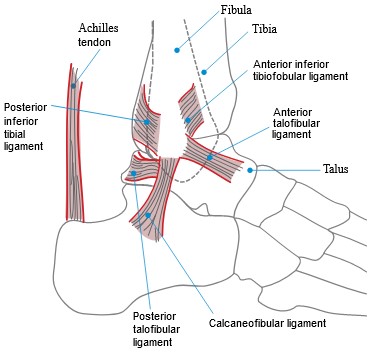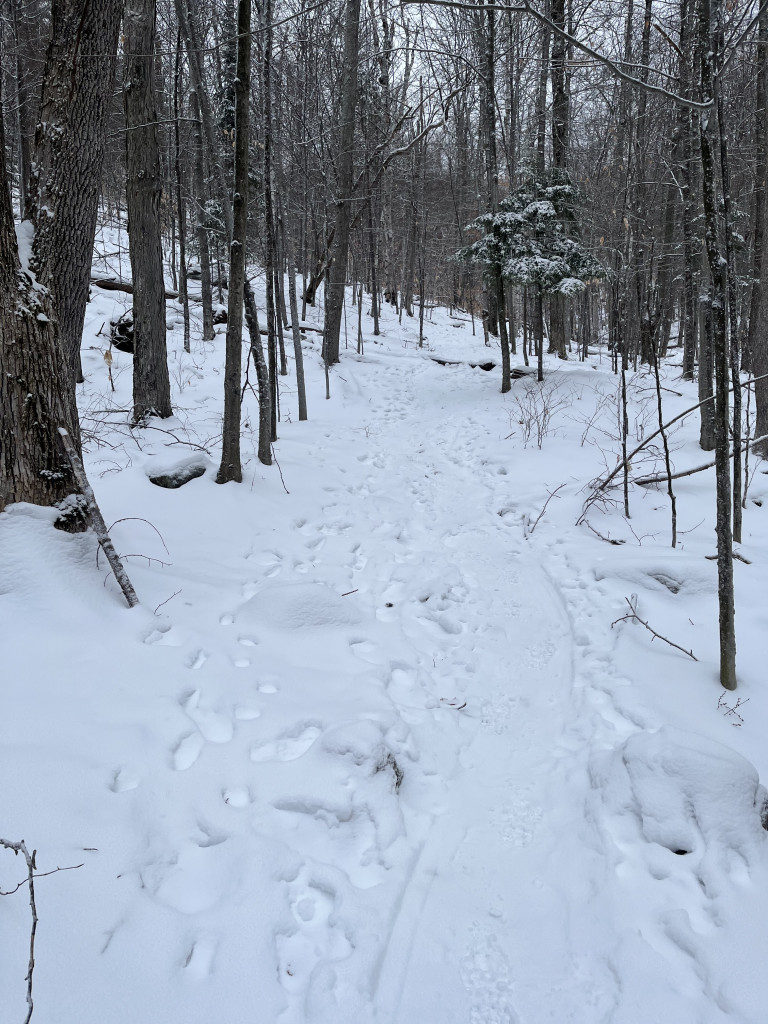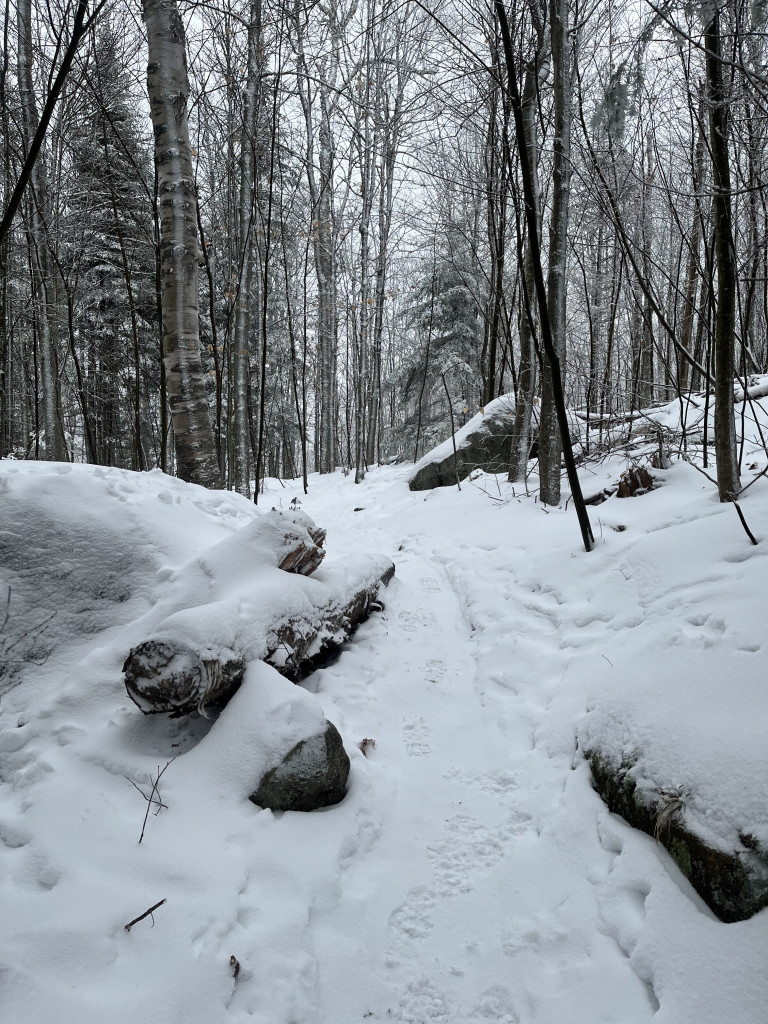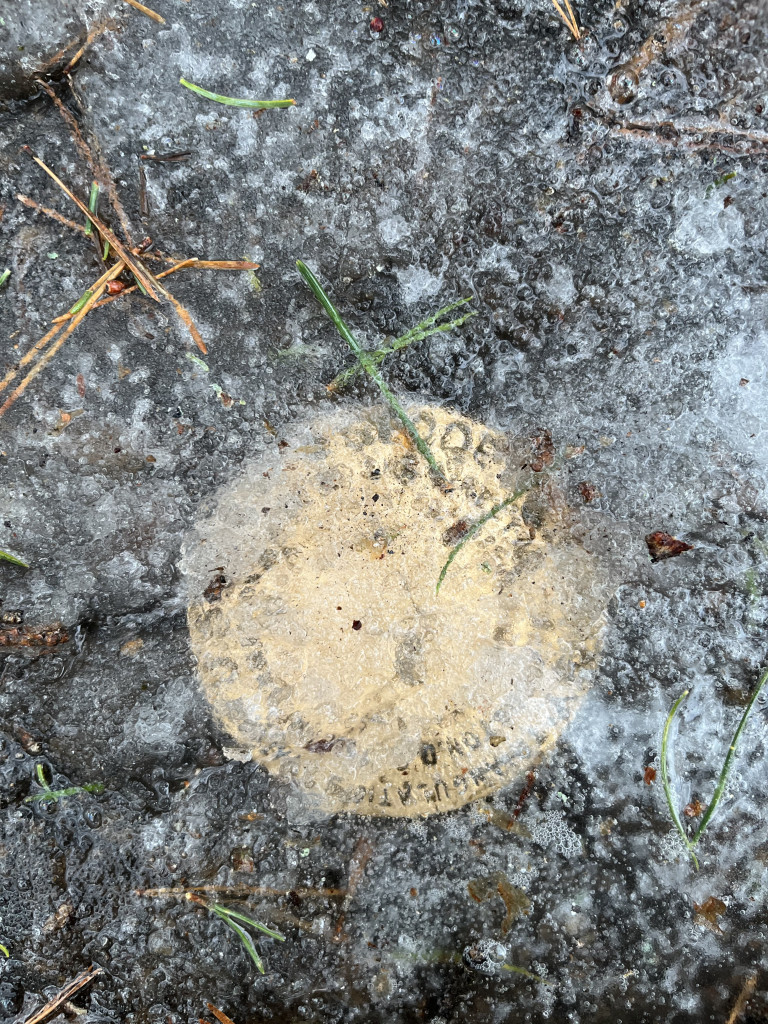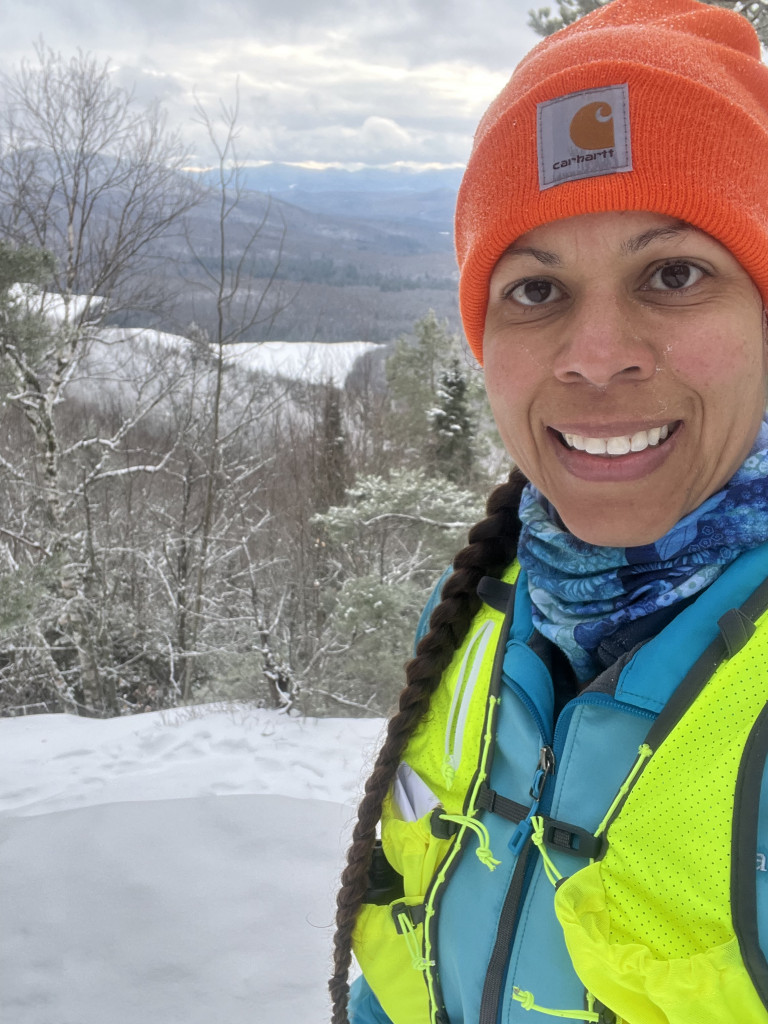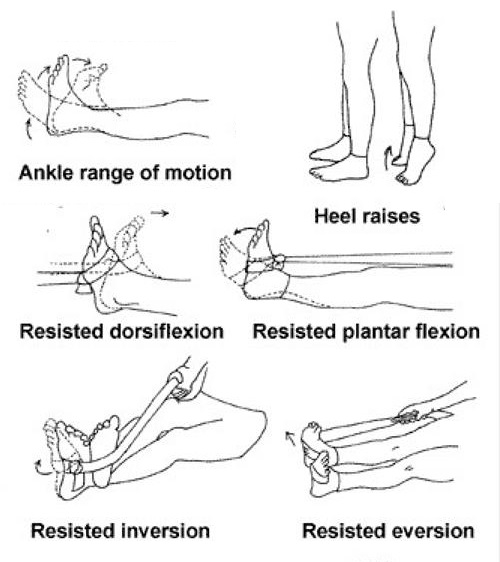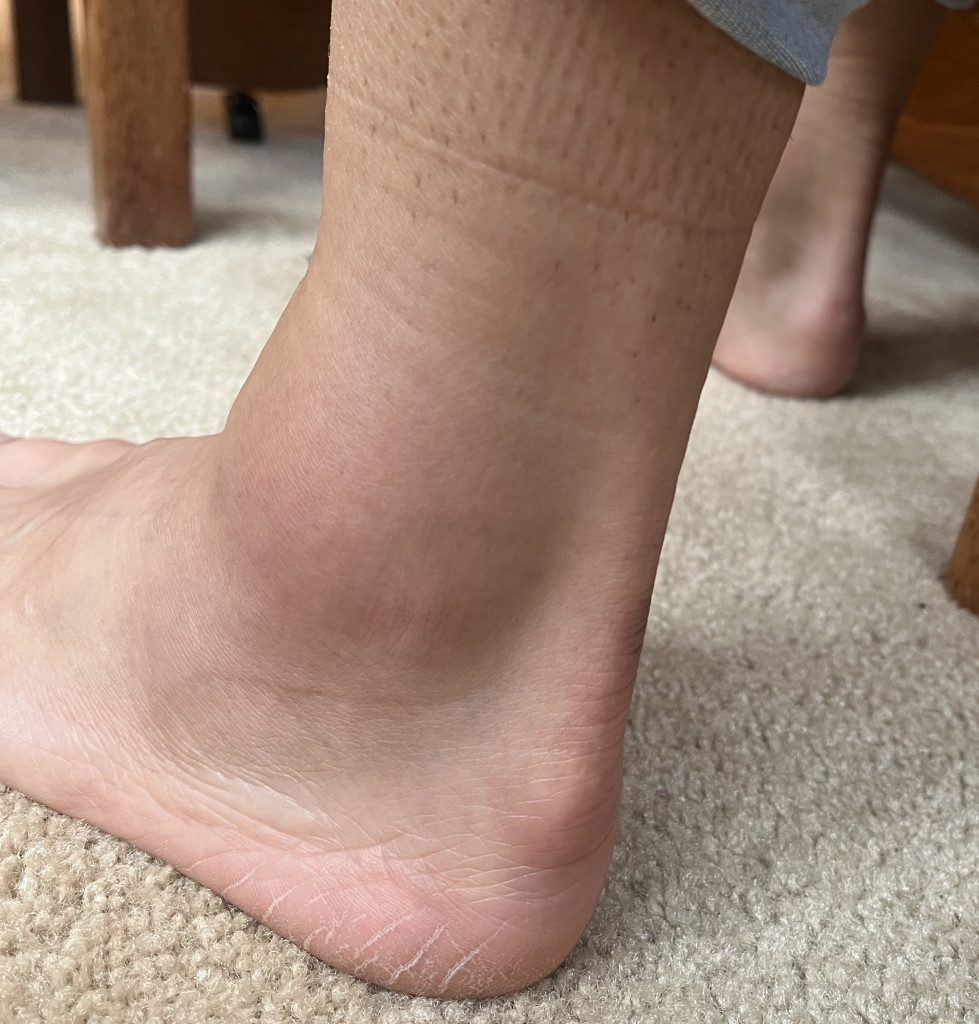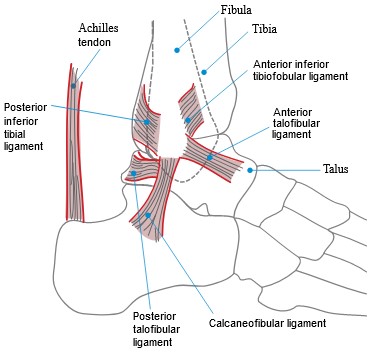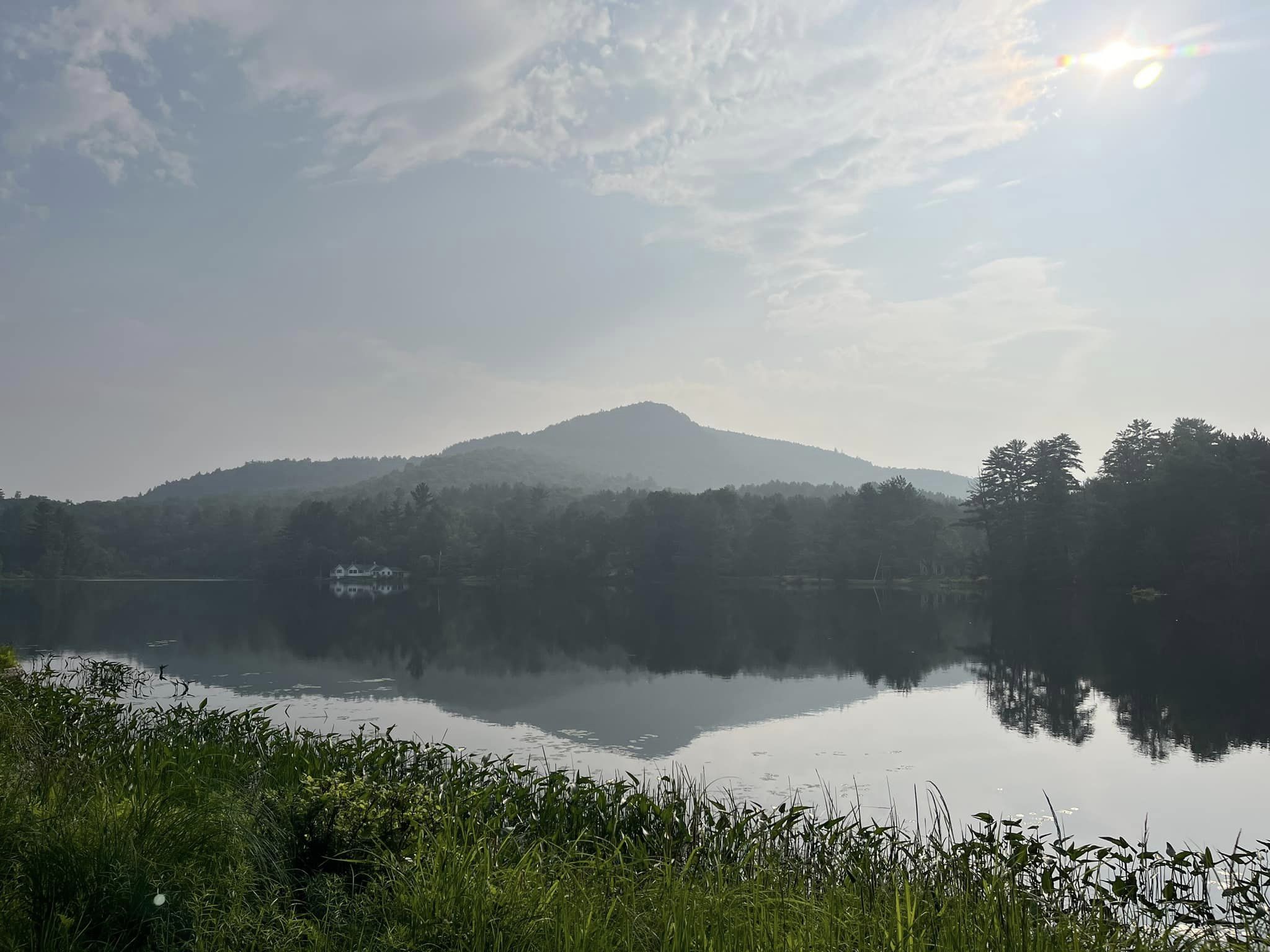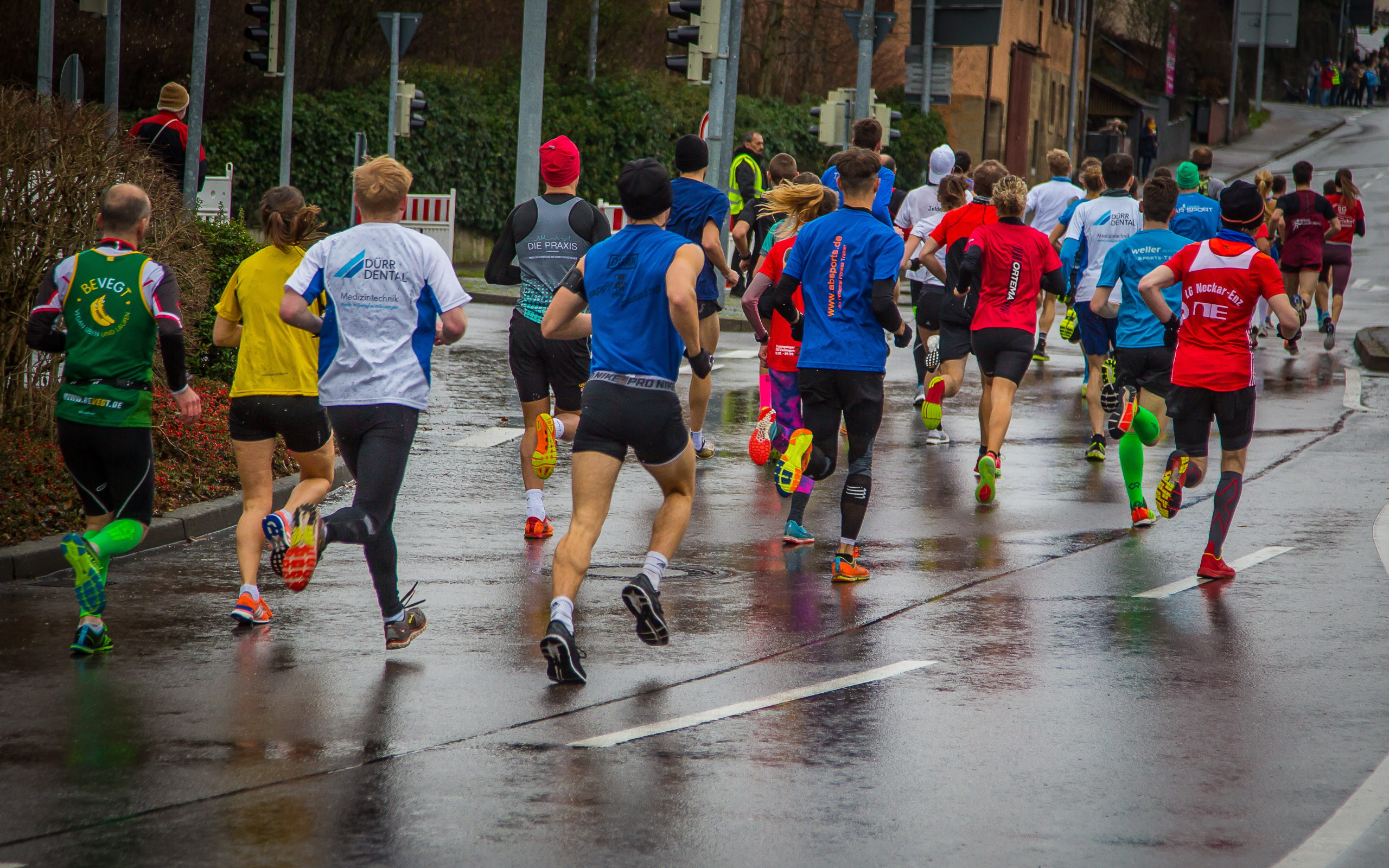A Few of My Injuries and How I’ve Recovered From Them
February 4, 2023 marked the fifth anniversary of my pelvic fracture, and I originally thought that would be a great time to discuss a few of the injuries I’ve experienced as a runner, as well as how I recovered from them. However, being injured at the time (refer to rolled ankle description below), I felt I was giving too much energy to injuries in general, as I was writing the article while doing PT and focusing on my recovery…so I put it off until now. Some of these injuries are fairly common to runners, and so my hope is that what I share here may help someone…if anything, just to provide some hope if anyone is sidelined right now. I know that, while recovering from my last ankle roll, I read about Nicole Bitter’s experience rolling her ankle the day before the Ultra Trail Capetown 100K in South Africa last November, while she was doing reconnaissance on the course. Unfortunately she had to DNS that race because of what appeared to be a Grade 2 sprain, but at the time of her IG post several weeks later, she was doing much better and preparing to run the Bandera 100K. She would go on to place 2nd GP, earning a Golden Ticket to Western States in the process. Armed with what I learned of her outcome, seeing the image of her sprained ankle, and knowing mine was never that serious, I was reminded that with time and patience, our bodies do heal.
Just a warning: I show a couple of images of swollen ankles in this article. Because they were Grade 1 sprains, they are not as rough as many sprains I’ve seen (including Nicole’s)! But I wanted to warn you nonetheless.
Let’s start with the most significant injury I’ve experienced so far.
2/4/2018: I suffer a complete transverse fracture of my right inferior pubic ramus. “I strained my groin.” I remember it was Superbowl Sunday, and we were hosting friends for the game that afternoon and evening. My husband and I were dressed in our Green Bay Packers gear, with cold beers in the fridge and air fryers awaiting, ready for the game. I remember leaving for my run that morning feeling great, and having my run go well, but upon returning home, I found it increasingly difficult to walk without pain throughout the course of the day. And if I really remember…I did feel an odd sensation in the area of my pubic symphysis (see image below) coming up that last hill…but I had felt it before, so didn’t think to question it now. Taking care of various tasks around the house to prepare became increasingly difficult, as I struggled even to shuffle from one room to the next. Notably, ducking to avoid running clothes hanging in doorways while lifting my leg to walk, was excruciating and nearly impossible. It was definitely strange.
Convinced it was only a groin strain, I decided to be a good girl and take Monday off from running. But Tuesday I was back at it, “rested” from that one day of rest. I managed to cover my usual 5-mile route that morning, and though at first the pain was moderate, it soon became manageable, though my high pain tolerance still leaves me wondering. It was a strange sensation: a line of pain wrapping itself around my right upper thigh. Upon completing my run I was quite satisfied with myself, but I would again take a day off, with plans to return to running on Thursday. I felt confident that I was taking it easy and doing the right thing by taking these extra days to rest.
However, Thursday’s run did not go to plan. In fact, I never made it past my neighbor’s house. There would be multiple failed attempts to start running, with the third footstep nearly causing me to collapse from the crippling pain that would instantly arise. Following these failed attempts, I came inside, sat on my stairs, and cried tears of frustration. My body simply refused to work for me. After some thought and words of encouragement from my husband, I went to the basement, sat on the spin bike, and spun my frustrations out for half an hour. But I would be in so much pain that day, and that night when I awoke to use the bathroom, I was barely able to walk…in fact, when I was done using the bathroom, I almost crawled back to bed. Clearly unable to run, barely able to walk, but still determined to stay fit, I would spend the next month in early morning basement spin sessions, becoming well acquainted with many of the snowboarders, skiers, and speed skaters in the Winter Olympics. I’d spend as much as two hours on the bike, maintaining aerobic fitness, yet riding out of the saddle because I could not ride while sitting on my pelvis… I maintained my resolve, even though the pain level would remain the same over the course of several weeks.
A month later I finally found myself in the orthopedist’s office, explaining how I had “strained my groin” a few weeks before, and how I finally made the “right” decision to get it checked out. And that no, I didn’t fall or do anything traumatic. And no, I had not seen any improvement at all in the pain over the past month. Not as convinced it was only a “groin strain” (i.e. a soft tissue injury that should begin to resolve within days), concerned with zero improvement after a month, and also concerned an x-ray would not show the hairline fracture he was predicting, my orthopedist skipped the x-ray and sent me right in for an MRI. A couple of weeks later I’d learn the words “inferior pubic ramus” and “transverse” and many more physiological terms I had not prepared myself to hear. “Yep, it’s fractured all the way through” I recall him saying to me, without blinking an eye and in the same tone he might tell a colleague “I’m going for coffee” or I might tell my husband “the mail just came.” Like it was no problem. Stunned, I sat there in silence, with my literal brokenness weighing heavily on me. Ironically, an x-ray would have shown the fracture because it was complete. Right away my orthopedist began talking about recovery times and how by the end of the year, I’d be back to running. I will always appreciate him for his optimism and forward-looking perspective. Had I wanted, I could have been back to running later that year. But in those first few moments, running was suddenly the furthest thought from my mind. I needed to figure out how to fix what I had somehow broken and put myself back together again. And understand how I broke myself in the first place. “Have you ever used crutches?” And so the adventure began.
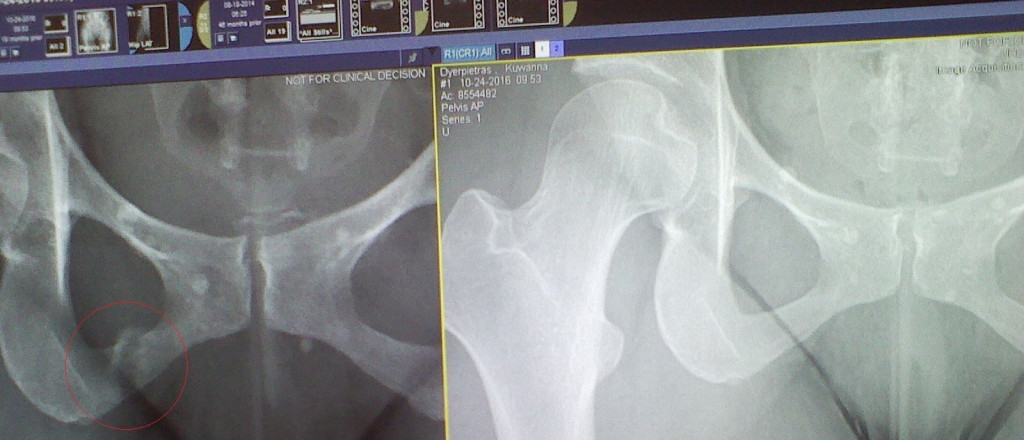
A bone scan would reveal a bone density bordering on osteopenia, a density much too low for an athletic pre-menopausal female, as far as my orthopedist was concerned. Years of an eating disorder that overlapped with the breastfeeding years of my second child may be to blame… And then there’s the undiagnosed Celiac disease that gradually began plaguing me over a decade following her birth; Celiac disease has also been tied to low bone density, as a result of malabsorption of nutrients. But who knows? Maybe both factors have played a role. Still, I’m just grateful to have caught all this while I was in my early 40s, not later when I’m much older and the ramifications can be much more significant. Today, calcium and weight-bearing exercise are my new best friends.
So what did this recovery look like? First and foremost, I would spend 12 weeks on crutches, with no exceptions. This included even short trips from my kitchen table, where I would eventually be working from home, to the bathroom just beyond the kitchen. Early on, I was largely unmotivated to stand in line at the DMV to get the documentation for accessible parking on campus, so every day I’d park in the regular lot, crutch my way uphill to the geology building with my backpack, crutch back and forth to the bathroom as needed during the day, and crutch my way anywhere else on campus that I needed to go. So, eventually, I also developed elbow tendonitis, and there came a time when my hip pain no longer kept me awake at night, but the pain from my elbows did. Because I was ABD status in my PhD program, my coursework was complete, and I was spending my days analyzing time series of orbital cycles, powdering rock samples, and writing. So, ultimately, I made the decision to forgo the daily commute and work from home. Amazingly, all this occurred after my last field season was complete.
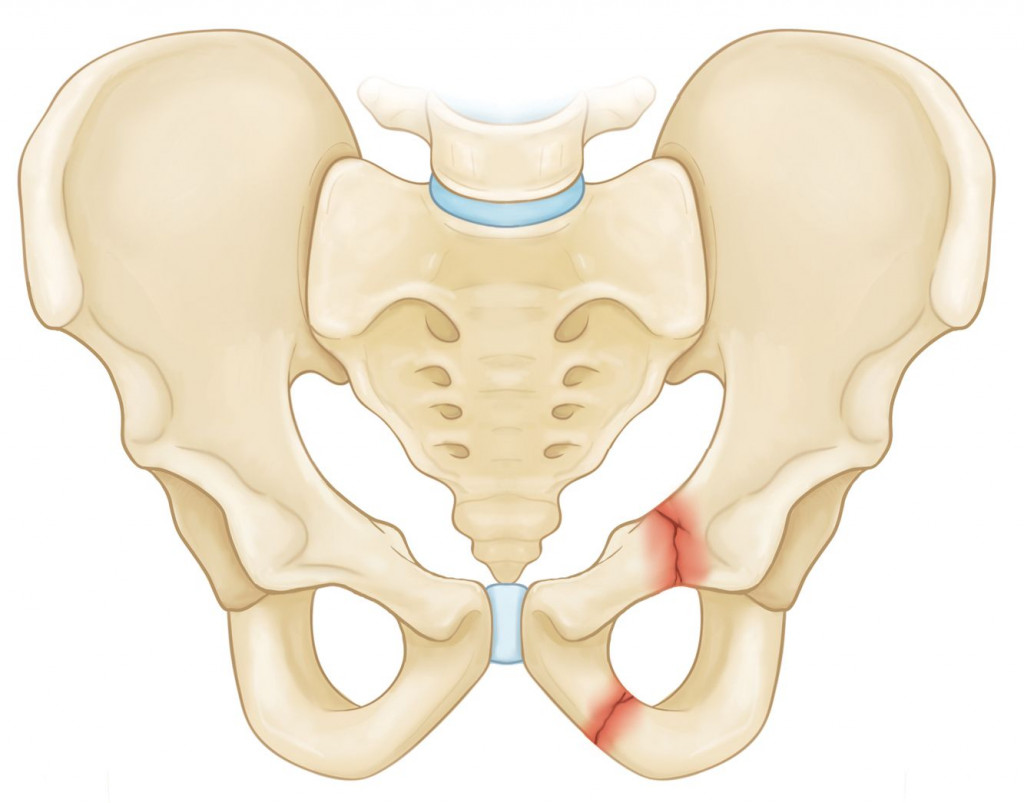
The fracture of my right inferior pubic ramus was a low-energy fracture and, in the medical field, is considered to be a stable fracture. In a stable fracture, there is commonly one break in the pelvic ring and the ends of the bones line up (see image above). (This is not the case in an unstable fracture.) As a result, there would be no PT, only recovery, and an eventual return to running. However, in lieu of rushing back to a running program, I spent one of the most epic summers of my life working as a farm hand at Shared Roots Farm, also assisting with weeding the black bean plants and the fall harvest at Stone Horse Farm. Spending a summer working at Shared Roots Farm scratched every itch I didn’t even know I had: it gave me a mental break from thinking all the time in academia and allowed me to do hard, honest work with really good people, in a much less competitive environment. Physical labor also kept my body strong. My work at the farm introduced me to some of the most amazing humans I still know to this day; and it taught me so much about farming. I love growing my own food and much of what I know about it, I learned that summer.
By the fall, I was back to finishing my dissertation and decided to focus on that, promising myself that as soon as I handed in my dissertation to my committee, I would resume a walking-then-running program. And that’s exactly what I did. On March 19, 2019, I took my first walk around my neighborhood: 2.09 miles with 358 ft of elevation because I just happen to live on a hill. Eventually, I transitioned to the Binghamton University track, and on April 16, 2019, I ran my first full 5K around that track, on a pelvis that just a year before, was broken through. I have never been so grateful to run even just a single mile continuously, with the full confidence that my whole body could support the effort, and not give out. This is not something any of us should ever take for granted, and to this day as I am running on my home trails, I carry this hard-earned gratitude with me, every step of the way.
1/9/2021: Iliotibial Band Syndrome (ITBS). Ouch!” That sucker really hurts when it gets inflamed. But I was so proud to have just completed my first winter marathon in bitter cold temperatures, and an unsupported marathon at that! My braid was frozen solid and my hands screamed at me with all the fury that is Raynaud’s, as I found myself in tears while attempting to thaw at the fireplace upon returning home. But my upper right leg seemed to be screaming at me too as my iliotibial band raged, and it wouldn’t let up for several weeks until I finally understood my affliction and what was causing it…At the time, I had no idea that this was my iliotibial (IT) band hollering at me. I wasn’t even exactly sure what an IT band was.
In the weeks that followed, I found myself struggling to run my then usual 5-mile route, and on some days, 4 miles was all I could muster before being forced to stop and hobble, as I slowly made my way home. When the pain would strike, usually by 4 miles, my entire upper right leg would seize, all the way down and into the side of my right knee. My leg would lock so abruptly that I’d come to an abrupt stop, semi-hopping on my left leg as I was unable to bend my right leg for a few seconds. After walking for a few additional seconds, my right leg would unlock and I could start to run again, but only for a short time before the process repeated itself. Any day I could complete 4-5 miles of running was considered a victory, as I could maintain a base fitness while I began troubleshooting in earnest this new and intense pain.
So what is the iliotibial (IT) band? According to the United Endurance Sports Coaching Academy (UESCA), the IT band is a thick band of connective tissue that extends out from the iliac crest of the hip, runs down the outside of the thigh, and attaches to the lateral head of the tibia, just below the knee (see image below). It is not a muscle, but rather connective tissue, with its primary role in running being to stabilize the knee. At the hip, the IT band attaches to a muscle called the tensor fasciae lata (TFL; plural latae). According to Physiopedia, the TFL originates specifically from the anterior superior iliac spine (ASIS) and the outer lip of the iliac crest, inserting onto the IT band. Together, they work to stabilize the knee when it is in full extension and to laterally rotate the tibia. According to UESCA, the “flare up” pain results from friction as the IT band rubs over the femoral epicondyle (bony protrusion) at the knee. As I explain below, this results from a weakened TFL and an IT band that is recruited by the body to take on the extra load.
So my TFL was weak and my IT band was fussy…perhaps the combination of forefoot striking, moderately high shoe drop, and long distances had been enough to finally cause a major flare up. I had felt this pain several times before, but only near the end of marathon-50K distances completed in my Salomon Sense Ride 2s (never in my Altras), and it would quickly dissipate soon after finishing the run. Now I understood what it was, and it had never been this bad before.
While I was troubleshooting my condition, I ran limited miles and returned to the spin bike to help stay active without further aggravating my IT band. I also began an aggressive stretching regimen, determined to reach my toes once again. I continued foam rolling my calves, hamstrings, and glutes – but not the IT band, which is made worse through foam rolling. And I began a PT program to address the weaknesses in my body that I was discovering to be the root cause of my sudden inability to run as much. I began to understand that as runners, we typically have weak TFLs because we rarely move laterally, which would help to strengthen the TFL. When one muscle in our bodies is underdeveloped but experiences a heavy load, commonly another muscle or connective tissue will take over, becoming overused, tight, and painful over time because these muscles and connective tissues were not designed to assume that degree of loading. (This is also why weak gluteal muscles often result in hamstring injury – weak glutes cannot sufficiently perform their job of hip abduction and leg extension, so the hamstrings are forced to work overtime and may become injured as a result.)
In an effort to begin strengthening my TFLs, I began doing lateral band walks every night before bed, working my way up from the least resistant band (yellow) to the most resistant band (blue), with several passes back and forth across the bedroom. I feel that these are crucial in balancing all the hours I spend moving in the forward direction, and I still do them to this day. I also incorporated clamshells and bridge raises. For the clamshells, I started with 10 on each side, then as I became stronger, I added resistance bands, working my way up from the least resistant (yellow) to the most resistant (blue). Ultimately, I did 20 clamshells on each side with the blue band. For the bridge raises, I started with 10 raises and worked my way up to 20, squeezing my glutes when my hips were most elevated.
I did quite a bit of research while I was doing PT, and I began to experiment with my footwear. I had learned that shoes with lower heel drops generally load the lower limbs (feet, ankles) more, whereas shoes with higher shoe drops load the upper limbs (knees, hips) more. I also learned that higher drops typically favor heel strikers, whereas lower drops favor forefoot/midfoot strikers. It turns out that I am a forefoot striker and I supinate like it’s going out of style (I’ve studied my own gait in videos and live iPhone shots), so I decided to try a lower shoe drop. More on my experience with this in a previous article here. I decided to shelve my beloved Salomon Sense Ride 2s (8 mm drop) and purchased a used pair of Hoka Challenger 5 ATR shoes (5 mm drop). And from the very first run, I noticed a difference. A HUGE difference. A I-can-finally-run-without-pain-and-now-I’m-crying-happy-tears difference. I was elated, but determined to recover completely by continuing to address weak TFLs, and so I remained consistent in my PT while running in the lower-drop shoes. After several weeks of easy runs, extra rest days, cross training, PT, and lower shoe drop, my IT band calmed down enough for me to run a virtual Chuckanut 50K in March. And by June, I had recovered enough to run a virtual San Lorenzo River Trail Run 50K, completely pain-free. A solo self-supported 50-miler would follow in July. I knew I was well on my way back to being healthy. And I had learned so much about my own anatomy and biomechanics in the process.
10/30/2021: I ran into one of the seemingly endless puddles and rolled my right ankle on the way out. I was in Ithaca for a group trail run and moving just a little faster than my comfort zone, in an effort to keep up with my group and avoid getting lost. Well, maybe not totally lost, but because my old phone didn’t hold a charge long enough to play the RunGo directions, I was dependent on the other runners for all the turns (note: I would NOT recommend this). And I figured the extra speed would help me build more confidence. The trails were a mess, with large puddles across many of them deep enough to hide the bottoms, and as I came running up out of one of these lake-puddles, I landed on a rock and my right lateral ankle folded; the next thing I knew, I was on all fours. Thankfully, I don’t recall registering a popping sound. But it did take me a second to register what I was suddenly doing on all fours, because it all happened so quickly. As I stood, my ankle began to throb, but after a few steps I resumed running on it. (Note: this is how my body works, at least with respect to ankle sprains, as I have done this before and since. But this was not the case with my hip fracture and though there are some arguments around maintaining some blood flow to the injury site, I would not necessarily recommend doing so to others). After making sure I was alright, the group continued ahead of me as I assumed a more conservative pace, but someone always waited at the turns, so I never did lose contact with the group. In the end, I finished my run, but learned that another runner in a separate group was not as lucky, as his run ended with an ankle fracture. So clearly the trails were not in good condition that day and my experience could definitely have been worse.
After my sprain, I took four days off from running and began a regimen of once daily Advil and twice daily application of a CBD salve, to help reduce the swelling. This would be a Grade 1 sprain (based on pain level, lack of bruising, and ability to bear weight on my right foot), likely of the anterior talofibular ligament (based in this case on the location of pain), which is consistent with my supination: as stated, I am a forefoot striker, and as I rolled my ankle, I rolled in a forward direction. After four days I was able to run comfortably, and the first place I went was my home trails…after spraining my ankle, I refused to leave off on a negative vibe like this, and did not want to be in a place of fear or reservation regarding the trails. So I conservatively ran my usual route, to create a positive experience that I could later come back to. After that, I would return to the roads for the next 5 months. I found the consistent surface of the asphalt to be more accommodating to a healing sprain, at least until I could restrengthen the ankle sufficiently, and with the winter months ahead of me, I found no benefit in risking re-injury to my ankle on unstable icy trails, certainly before I could get all of my proprioception back.
I’d make a tiny exception to run up Baker Mountain in the Adirondacks on December 28, 2021, and though the winter summit was an amazing experience, I would land my foot imperfectly just once – and my ankle let me know. At that point, it occurred to me that what was missing was ankle strength. After two months of rest and care, the swelling had reduced, but my ankle was still weak. My ankle simply had lost that ability to maintain its position on unpredictable ground, similar to a rubber band that has been stretched too far. Rubber bands are irreparable once stretched beyond their elastic ability, but thankfully many ankle sprains can be rehabilitated and reverted back to those highly resistant bands that keep your foot in the correct position, while supporting the rest of the leg (and all of you).
Upon returning home, I began incorporating ankle strengthening exercises, in addition to my nightly foam rolling and lateral band walks, gradually working my way up from the least resistant bands (yellow) to the most resistant (blue). Exercises included resisted inversion and eversion with the elastic bands (I worked my way up to 20 on each side), as well as resisted plantarflexion and dorsiflexion with an elastic band (up to 20 on each side; see image below). Over a period of weeks, as I felt my right ankle getting stronger and I regained confidence in my ankle, I progressed to standing heel raises and later, hopping. For both heel raises and hopping, I started first on both feet, then progressed to doing these on each foot. Hopping helped to address one of the final components of my recovery, which is regaining proprioception. And it really was so strange, how the first time my brain told my right leg to hop, it didn’t want to respond. Part of me was scared, nervous perhaps about reinjury…would the ankle hold up without pain? The other part felt like there was a total disconnect between my brain and my leg. My brain said “go,” and my right leg said “absolutely not.” I had to “make myself” several times before I could literally take what would be a leap of faith. But the ankle held. And with each successive hop, I gained more confidence. There are other exercises, such as balancing on a BOSU ball or balancing with your eyes closed, and those are also effective in rehabilitating the ankle. I opted not to invest in a BOSU ball, and the exercises I described work for me and can be completed nightly before bed, so I stayed with those long enough to get me into a summer season of trail racing. (I would then stop the ankle PT for about a year, until I would roll my other ankle, as described below.) The proprioception work got me back to 95% of where I had been, and ultimately, the last 5% of restrengthening came when I returned to the trails – practice on uneven ground helped strengthen the last of any remaining weakness in my ankle, and my improved proprioception has had me self-correct in mid-air following a semi-roll on more than one occasion. It’s such a critical aspect to pay attention to, and one that’s so commonly overlooked. Along with lateral band walks, I now swear by it.
1/9/2023: I’m running through the woods, immersed in thoughts of “I love feeling this strong!” only to find myself on all fours again just seconds after. If there’s anything I’ve learned about my mishaps, it’s that they often occur when I’m running on flat terrain, starting to tune out just a little because the run feels so flowy and so cruisy. All that beautiful needle ice had caused the ground to buckle and the surface to become hard and uneven. My left foot landed unevenly as I was lost in my own mind, and my left ankle rolled as a result. This time, I heard a pop. After walking a few steps, I run-hobbled over the last of the trail (ironically, this was near the end of my run), and then run-hobbled the road to home. Having recovered successfully from the other sprain described above, I wasn’t as afraid of the unknown this time. There was no unknown. I knew the rest, medication, and strengthening exercises to come. Fortunately, this would also end up being a mild Grade 1 sprain (based on pain level, lack of bruising, and ability to bear weight on my left foot), likely of the calcaneofibular ligament (based in this case on the location of pain), which is consistent with my recent seasonal shift to landing more midfoot, in response to the increase in fall leaves and later snow and ice during the winter months: landing more midfoot, as I rolled my ankle, I rolled more laterally, rather than forward. With my first ultra scheduled for late April, there would be plenty of time to recover and to train, if I was patient and took the appropriate measures. I reminded myself that I had everything to gain and nothing to lose with extra days off. So there would be four days of rest and plenty of coffee.
Though I would resume my running on the roads, the snow had melted and a few weeks later I found myself back on the trails, albeit cautiously. I was eager for the woods and the padded running that comes with traversing dirt and not asphalt…but a semi-roll of my right ankle on icy trails a week later had me right back on the roads! (For a moment there I thought I was going to be dealing with two sprained ankles! Thankfully my right ankle was fine.) Though we had numerous periods in which the trails were completely free of snow, conditions can still be a mess this time of year here in the Northeast. There’s plenty of slippery mud and no shortage of needle ice (or whatever ice) when temperatures dip below freezing, causing all that pore water to solidify and expand into exquisite needle-like crystals that are amazing to photograph, but make for some bumpy and lumpy trail running filled with uncertainty. And then there are some wild variations that can occur along a single trail this time of year: this winter, I ran through snow, mud, huge puddles, and bare dirt, all along a single trail on a single run.
So I opted to be patient and spent the rest of February running on asphalt, venturing over as many beautiful hilly country roads as I could to keep it interesting. I opted to sleep and drink that extra cup of coffee on days that were particularly cold or I was simply tired, and I focused on PT and recovery, knowing the benefits that resulted the last time around. I would also use the CBD salve on my ankle twice a day for two weeks (Blue-Emu and Biofreeze have also been helpful). Significant improvement of the ankle came within just a few days and though heeding a friend’s good advice, with such a quick improvement I made the decision not to see my ortho again this time.
April 2023: Final thoughts…
Injuries can be scary, especially when your plans for an entire season seem to go up in smoke, as you are forced to pivot and adjust, not just physically, but also mentally. My very first would-be marathon in 2013 wasn’t, because I fell and broke my finger two months prior, landing me in a purple cast (at least it was purple). I did not share this story here, but I was so affected by this experience that when I decided to register for another marathon, it would be a last minute change from a half marathon and I never told anyone, including my own husband, until I was literally toeing the line. I was so afraid to jinx it. (I did finish.) We live to run, but so many of us also run to live… And in a way, injuries force us to redefine ourselves, even if temporarily, threatening to strip away the only identity many of us really know. In the case of the IT band flare up, I cried my frustrated tears and grudgingly resumed cycling as I struggled to maintain a sense of self and uncover the source of the flare up. But with the pelvic fracture, the injury was so bad, I chose to walk away. At that point I was literally so broken, and in one of the largest bones of my body, that I had to shift my energy and focus not just to a major recovery, but also to really understanding the cause of this fracture, so that it wouldn’t ever happen again. It went way beyond the running and for a time, I wasn’t even sure I would really run again.
These days, I am especially grateful for every mile I get to run, especially on the most challenging of trails, and for a race season that is right around the corner. I get to coach and run with my daughters. I take none of this for granted. Ever.
Now to continue working on daydreaming a little less…
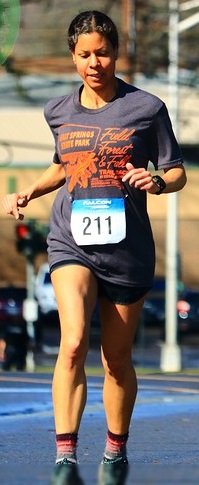
Photo credit: Matt Gawors of Confluence Running.
Add Comment
You must be logged in to post a comment.


